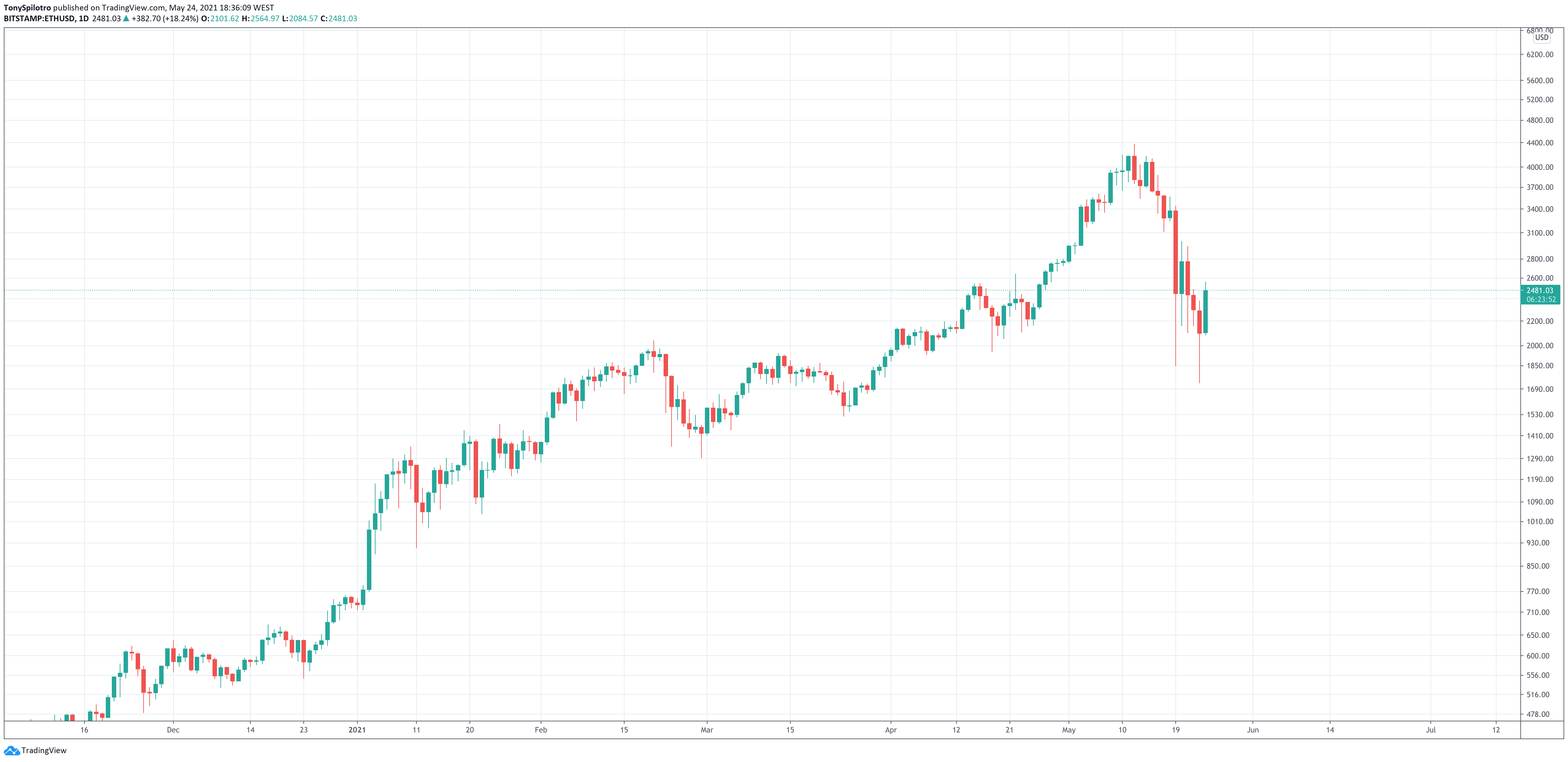Crypto yield-earning platform Celsius now holds over 100 bitcoin, according to a company press release issued today. BTC accounts for roughly 25% of the platform’s total community assets.
Celsius: The In’s And Out’s
Despite a challenging month for bitcoin in May, the company also reported that BTC users with inflows over doubled the amount of users transferring out BTC, with roughly 750,000 users globally. The company’s landmark passing of 100K BTC holdings sets a new company high.
APY rewards for Celsius users vary, generally between 3.51% – 6.2% for U.S. users, depending on the amount of BTC in their account. International customers are currently offered 4.4% APY for BTC in their Celsius accounts. In today’s release, the company noted that nearly 2,500 BTC have been paid out to customers in crypto rewards.
The other side of Celsius’ business is through borrowing; the firm offers no origination fees, no credit checks, easy refinance options, and aggressive rates for borrowers in both USD and in a variety of stablecoins. Crypto lending has increased in popularity recently, and could potentially improve general liquidity and price discovery for many assets, but also comes with inherent risks.
Related Reading | Celsius Network’s CEL Token Now Listed On OKEx
The Competition
Celsius continues to emerge in a competitive DeFi crypto lending landscape, battling with notable contenders such as Nexo and BlockFi. Aggressive rates continue to be a major sticking point for consumers. BlockFi is currently offering anywhere from 0.5% to 5% APY for BTC interest, and Nexo is currently offering between 6% and 8% APY on BTC interest. Rates often are variable and can fluctuate, and will also depend on whether the consumer is redeeming them through BTC or through the platform’s native coin. However, native token rewards are typically not accessible for U.S. consumers.

Celsius' native token, CEL, is sitting at record high levels lately. | Source: CEL-USD on TradingView.com
What It Means
Celsius started off in 2017 and now looks to maintain a somewhat aggressive strategy to grow it’s position in the market, amassing over $5B in crypto assets. The firm continues to look at partnerships to bolster growth, including a recent partnership with NBA athlete and crypto entrepreneur Spencer Dinwiddie, and increasing conversations surrounding the firm’s upcoming web app.
Additionally, the platform could likely look at more corporate partners to increase growth as well. Last month, the platform partnered with B21 Crypto, a global, mobile-first crypto platform. This allowed B21 to launch a new ‘Earn’ feature, allowing the company’s users across 82 different countries access to the weekly yield services that Celsius provides to it’s consumers. The company has also invested further in similar partnerships that have already been established, including crypto exchange Liquid. Liquid was the first exchange to support Celsius’ native CEL token in 2019.
Related Reading | Passive Income, A Unique Blockchain Token Re-Imagining DeFi Yield Generation
Featured image from Pixabay, Charts from TradingView.com















